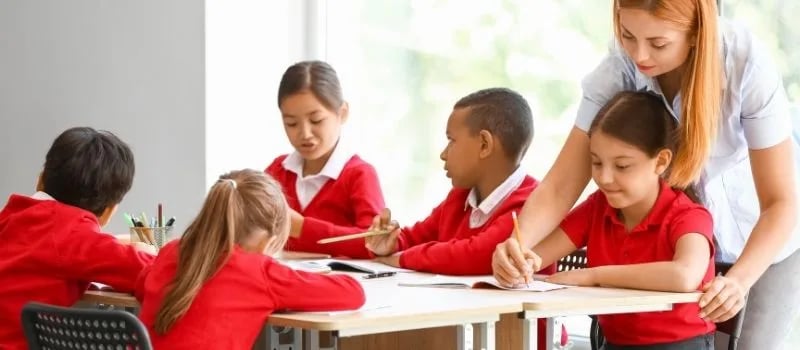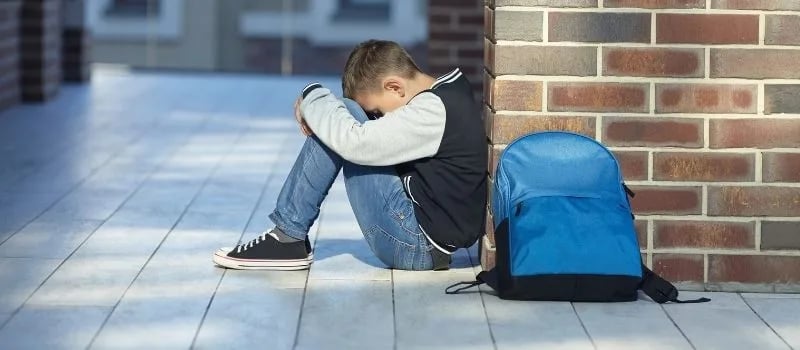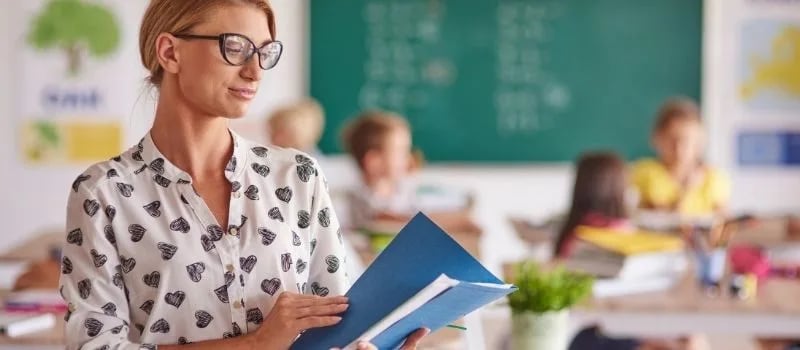Child safeguarding is taken very seriously in schools throughout the UK, and rightly so.
Anyone who works with or around children has a duty of care to safeguard and protect vulnerable children or young people from harm inside and outside of their institution.
Having the appropriate safeguarding policies in place will benefit children and young people, ensuring schools are safe places and the child is comfortable talking about any issues they're dealing with.
It's crucial your staff understand their responsibilities and the role they play in safeguarding. This is where our ultimate guide for safeguarding in schools comes in. It covers everything you need to know regarding safeguarding in schools.
What is safeguarding in schools?
Safeguarding children is a collective effort to prevent harm, ensure well-being, and enable children to thrive in a safe environment. Child safeguarding measures focus on vigilance, awareness, and action from all involved in their lives.
When it comes to safeguarding in schools, it's the school's responsibility to keep the pupils safe from harm and abuse. This requires having:
- School policies and procedures in place
- Staff confident in identifying and responding to safeguarding concerns
Why is safeguarding important in schools?
Schools should provide a safe space for children and adolescents to learn, develop and enjoy their childhood. It's so important, therefore, to have an effective school safeguarding policy and trained staff in place to identify the warning signs of any abuse or harm, so action can be taken to protect them.
Being able to identify safeguarding and alerting the appropriate authorities to help the child or young person. It creates a school environment that ensures children are safe, loved and thrive.

Is safeguarding training mandatory for all school staff?
Yes! All school staff should receive appropriate safeguarding and child protection training, which should be regularly updated. As a minimum, admin/support staff should have at least an introductory level of safeguarding, whilst teachers should be trained to a level 2 and headteachers to a level 3.
We offer Safeguarding for Children Level 1, Level 2 and Level 3, as well as Child Protection and a range of specialists courses. You can view our Safeguarding for Education courses here.
The roles and responsibilities of safeguarding for school staff
It's the school staff's responsibility and role to protect the pupils from harm, but what counts as 'harm' and what are the key issues to look out for?
- Bullying - This can happen inside and outside of school and can have an effect on both the child's mental and physical health. It's important for school staff to be trained in Peer on Peer Abuse to know when bullying becomes an issue.
- Child neglect - This is the most frequent kind of child abuse and it means the repeated failure to meet a child's basic requirements. Our Child Neglect course can help your staff spot any signs or indicators and how to report any concerns.
- Female Genital Mutilation (FGM) - This is an illegal procedure in the UK and involves cutting, injuring or changing female genitals for no medical reason. Ensure your staff are fully trained in FGM in education to ensure they feel confident to deal with any issues.
- Child sexual exploitation - This is when any person under the age of 18 was sexually abused, either by physical force, manipulation or deceived into sexual activity. It's crucial your staff are trained in Child Sexual Exploitation, so they're able to spot the signs and are aware of the process of grooming.

Safeguarding policy in schools
A safeguarding policy or child protection policy is a statement that makes it clear what your school will do to keep children safe. It's a vital document that everyone must follow.
So, what should it cover? Some key sections that should be included are a policy statement, legislation and guidance, key contacts, a summary of safeguarding children, an overview of responsibilities in the school, and child protection procedures.
What does DSL stand for in safeguarding?
DSL stands for Designated Safeguarding Lead, and all educational institutions need one.
A DSL is a member of staff who provides support to staff members to carry out their safeguarding duties and coordinates a school's safeguarding policies, procedures and arrangements.
There must be a designated safeguarding lead available at all times, so it's good practice to ensure there are enough staff trained to carry out this role.

How to report safeguarding concerns
Whether you're not entirely sure there is an issue or you know for a fact a child isn't safe, reporting any safeguarding concern is vital. It's better to be on the safe side. It's best to discuss it with your DSL and get it reported. You should call the police (999) first but you can also call the NSPCC helpline on 0808 800 5000.
Our safeguarding for school training courses
We have plenty of Safeguarding for Education courses to ensure all aspects of safeguarding are covered and your school stays up to date with your compliance needs. Perfect for INSET training or whenever your staff need to refresh their knowledge.
Discover all our Safeguarding courses and confidently deal with any issue.

-1.webp?width=243&height=74&name=Logo%20R%20Homepage%20White%20Final%20Horizontal%20Large%20NEW%20small%20(2)-1.webp)


-1.webp?width=50&height=59&name=Cyber%20Essentials%20Badge%20Large%20NEW%20(72dpi)-1.webp)
COMMENTS